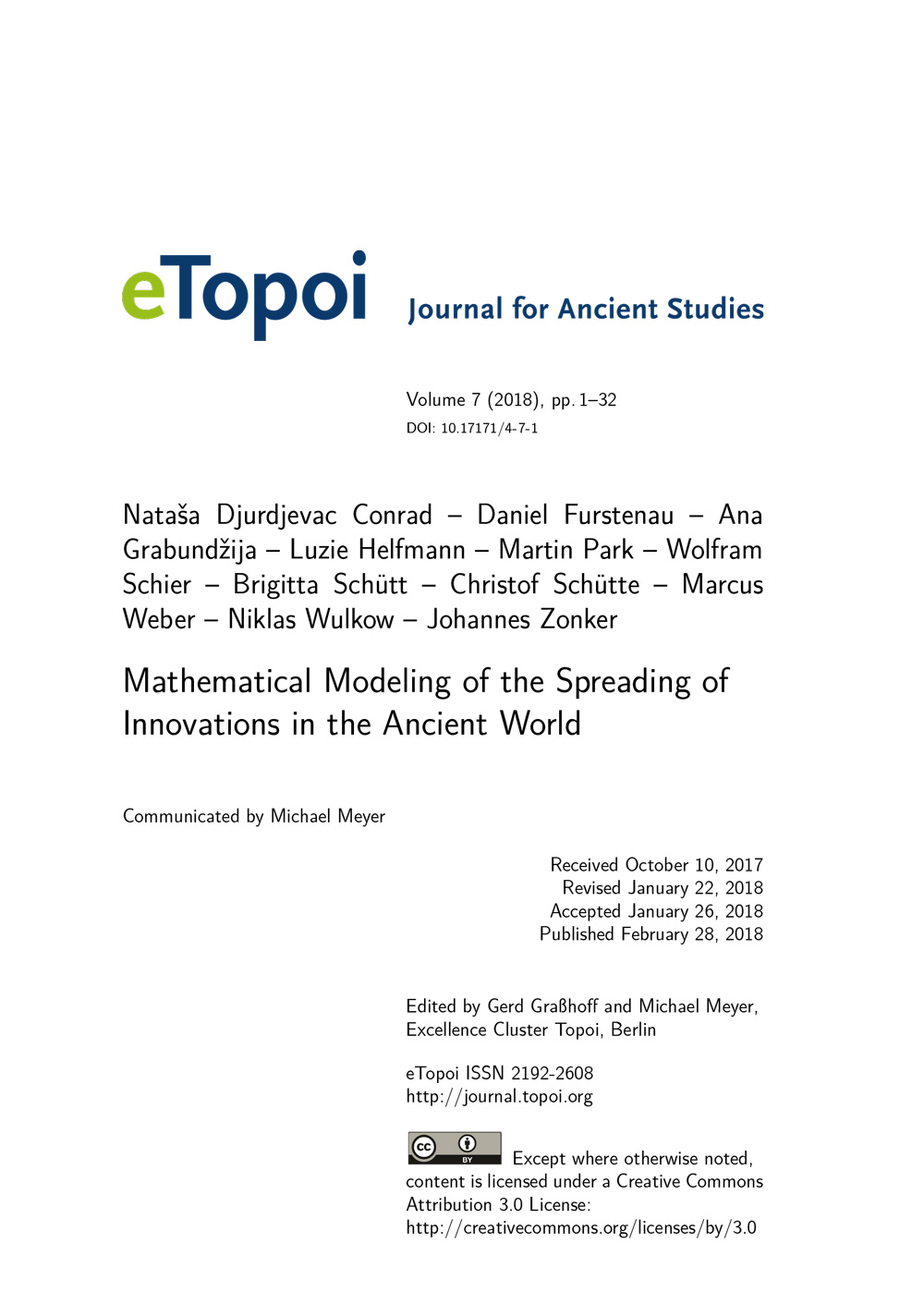Mathematical Modeling of the Spreading of Innovations in the Ancient World
In this article, we develop a mathematical model for the spreading of the wool-bearing sheep in a population of herders in the Near East and Southeast Europe between 6200 and 4200 BC. Herders are considered as agents moving diffusively in a suitability landscape, such that motion into regions attractive for sheep herding are more probable than to unattractive regions. Simultaneously agents interact socially with another and pass on the innovation with some probability. The parameters of the agent-based model are fitted to available archaeological information. A simulation tool is proposed for computing the evolution of the spreading process in time and space, offering a way to study qualitative effects of different aspects affecting speed and spatial evolution of the spreading process.
In diesem Artikel wird ein mathematisches Modell entwickelt für die Ausbreitung des Wollschafs unter Hirten im Nahen Osten und in Südosteuropa zwischen 6200 und 4200 v. Chr. In unserem Modell werden Hirten als Agenten betrachtet, deren Bewegungen durch Zufallsprozesse gesteuert werden, sodass sich die Agenten mit größerer Wahrscheinlichkeit in Regionen aufhalten, die attraktiv für die Schafhaltung sind. Das Modell berücksichtigt außerdem soziale Interaktionen zwischen Agenten und erlaubt die Weitergabe der Innovation zwischen Agenten mit einer bestimmten Wahrscheinlichkeit. Die Parameter des agentenbasierten Modells werden an die verfügbaren archäologischen Daten angepasst. Ein Simulationsverfahren für die räumliche und zeitliche Entwicklung des Ausbreitungsprozesses soll es ermöglichen, qualitative Effekte von verschiedenen Aspekten zu studieren, die den Ausbreitungsprozess beeinflussen.

